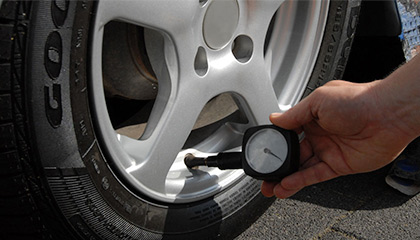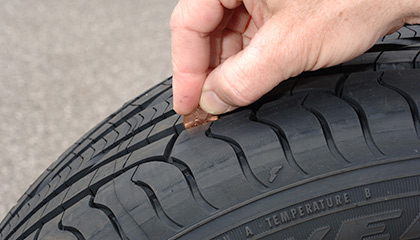So you’ve just bought a new set of tyres for your car and you’re ready to hit the road. Before you do that, here are a few things to keep in mind to make sure your new tyres last longer and also keep you and your loved ones safe on the road.


Drive smoothly
As simple as this sounds, the way you drive your car greatly affects how your tyres wear and how long they’ll last. Smoother gear changes, gentler braking, acceleration and cornering can all help to prevent unnecessary wear to your tyres.


 Be aware of where you drive
Be aware of where you drive
Another thing that you can do to help prolong the life of your new tyres is to pay attention to the road surface and your surroundings. Whether it’s potholes, uneven roads or even just not parking too close to a kerb, being careful when you drive not only keeps you safe but gives your tyres a longer lifespan too.
Keep your tyres properly inflated If your tyres are under-inflated, they create excess heat and this can lead to blowouts and make them more likely to puncture. Inversely, if your tyres are overinflated, blowouts can happen too due to overpressure and your treads will wear out a lot faster. That’s why making sure your tyres are properly inflated lets them last longer, and keeps you safer.
Get your wheels aligned
When your wheels are out of alignment, your tyre treads will wear out unevenly. This makes one part of the tyre weaker and more likely to get damaged. By getting your tyres aligned regularly, you can help make sure your treads wear evenly and last longer.
Check your tyres for tread wear
It’s inevitable for the rubber on your tyres to wear off the longer you drive. But what you can do to make sure that the treads wear evenly is to bring them in for check annually. This will not only let you take the necessary actions to prevent uneven tread wear, it also keeps you updated on the state of your tyres and how safe they are.
Source: Goodyear
Car tyre pressure is measured by calculating the amount of air that has been pumped into the inner lining of your tyre in pounds per square inch (PSI) or BAR pressure.
The manufacturer of your vehicle will specify the suitable pressure for your tyres, and it is your responsibility as the driver to make sure that the pressure is checked and corrected on a regular basis. We recommend doing this every two weeks to ensure optimum tyre pressure.

Under inflated tyres
Tyres can quickly become underinflated if you don’t check them regularly. Under inflated tyres will have uneven contact with the road and will exhibit excessive wear on the inside and outside edges of the tread if they are left underinflated for some time. Not only does low tyre pressure wear your tyres out more quickly but you may also experience increased rolling resistance with the road which means reduced fuel efficiency and increased CO2 emissions.
Over inflated tyres
Putting too much air in your tyres can be just as damaging and costly. Over inflated tyres will have a smaller contact patch – the part of the tyre that makes contact with the road – which can lead to a loss of traction and poorer braking distances. Overly high tyre pressure will also cause heavy and uneven wear across the central part of the tyre leading to shorter tyre lifespans than if it was correctly inflated.
Correct tyre pressures
It’s not always apparent that air is being lost from your tyres, but it generally escapes at the rate of up to two PSI of air every month. More air is usually lost during warm weather, so more regular checks are needed when temperatures rise.
You can find the recommended tyre pressure for your vehicle in your vehicle handbook or printed either in the sill of the driver’s door or on the inside of the fuel tank flap. Your vehicle manufacturer may suggest different tyre pressures for your front and rear tyres so make sure you aware of these guidelines.
Sources:KwikFit